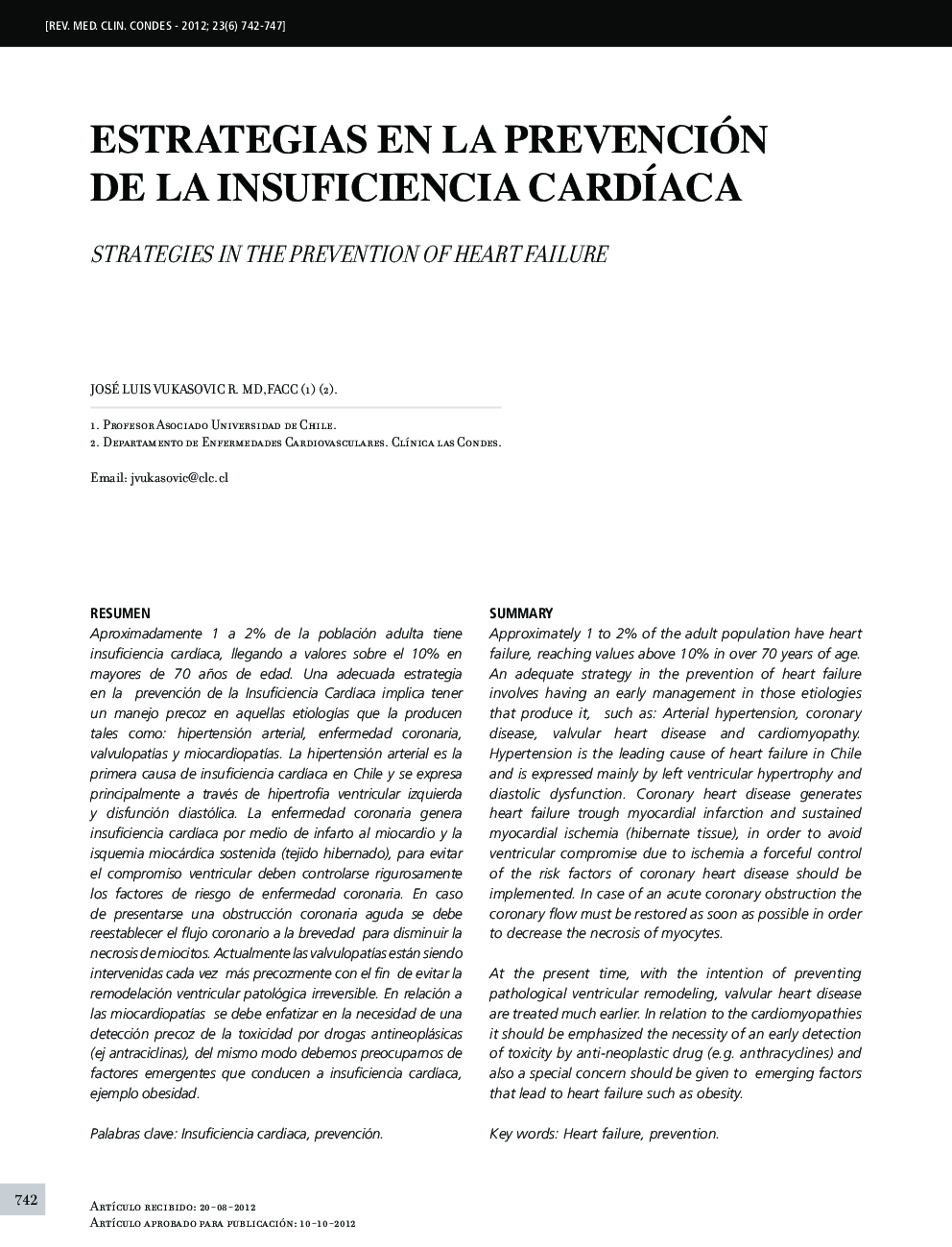| Article ID | Journal | Published Year | Pages | File Type |
|---|---|---|---|---|
| 3830578 | Revista Médica Clínica Las Condes | 2012 | 6 Pages |
ResumenAproximadamente 1 a 2% de la población adulta tiene insuficiencia cardíaca, llegando a valores sobre el 10% en mayores de 70 años de edad. Una adecuada estrategia en la prevención de la Insuficiencia Cardíaca implica tener un manejo precoz en aquellas etiologías que la producen tales como: hipertensión arterial, enfermedad coronaria, valvulopatías y miocardiopatías. La hipertensión arterial es la primera causa de insuficiencia cardíaca en Chile y se expresa principalmente a través de hipertrofia ventricular izquierda y disfunción diastólica. La enfermedad coronaria genera insuficiencia cardíaca por medio de infarto al miocardio y la isquemia miocárdica sostenida (tejido hibernado), para evitar el compromiso ventricular deben controlarse rigurosamente los factores de riesgo de enfermedad coronaria. En caso de presentarse una obstrucción coronaria aguda se debe reestablecer el flujo coronario a la brevedad para disminuir la necrosis de miocitos. Actualmente las valvulopatías están siendo intervenidas cada vez más precozmente con el fin de evitar la remodelación ventricular patológica irreversible. En relación a las miocardiopatías se debe enfatizar en la necesidad de una detección precoz de la toxicidad por drogas antineoplásicas (ej antraciclinas), del mismo modo debemos preocuparnos de factores emergentes que conducen a insuficiencia cardíaca, ejemplo obesidad.
SummaryApproximately 1 to 2% of the adult population have heart failure, reaching values above 10% in over 70 years of age. An adequate strategy in the prevention of heart failure involves having an early management in those etiologies that produce it, such as: Arterial hypertension, coronary disease, valvular heart disease and cardiomyopathy. Hypertension is the leading cause of heart failure in Chile and is expressed mainly by left ventricular hypertrophy and diastolic dysfunction. Coronary heart disease generates heart failure trough myocardial infarction and sustained myocardial ischemia (hibernate tissue), in order to avoid ventricular compromise due to ischemia a forceful control of the risk factors of coronary heart disease should be implemented. In case of an acute coronary obstruction the coronary flow must be restored as soon as possible in order to decrease the necrosis of myocytes.At the present time, with the intention of preventing pathological ventricular remodeling, valvular heart disease are treated much earlier. In relation to the cardiomyopathies it should be emphasized the necessity of an early detection of toxicity by anti-neoplastic drug (e.g. anthracyclines) and also a special concern should be given to emerging factors that lead to heart failure such as obesity.
